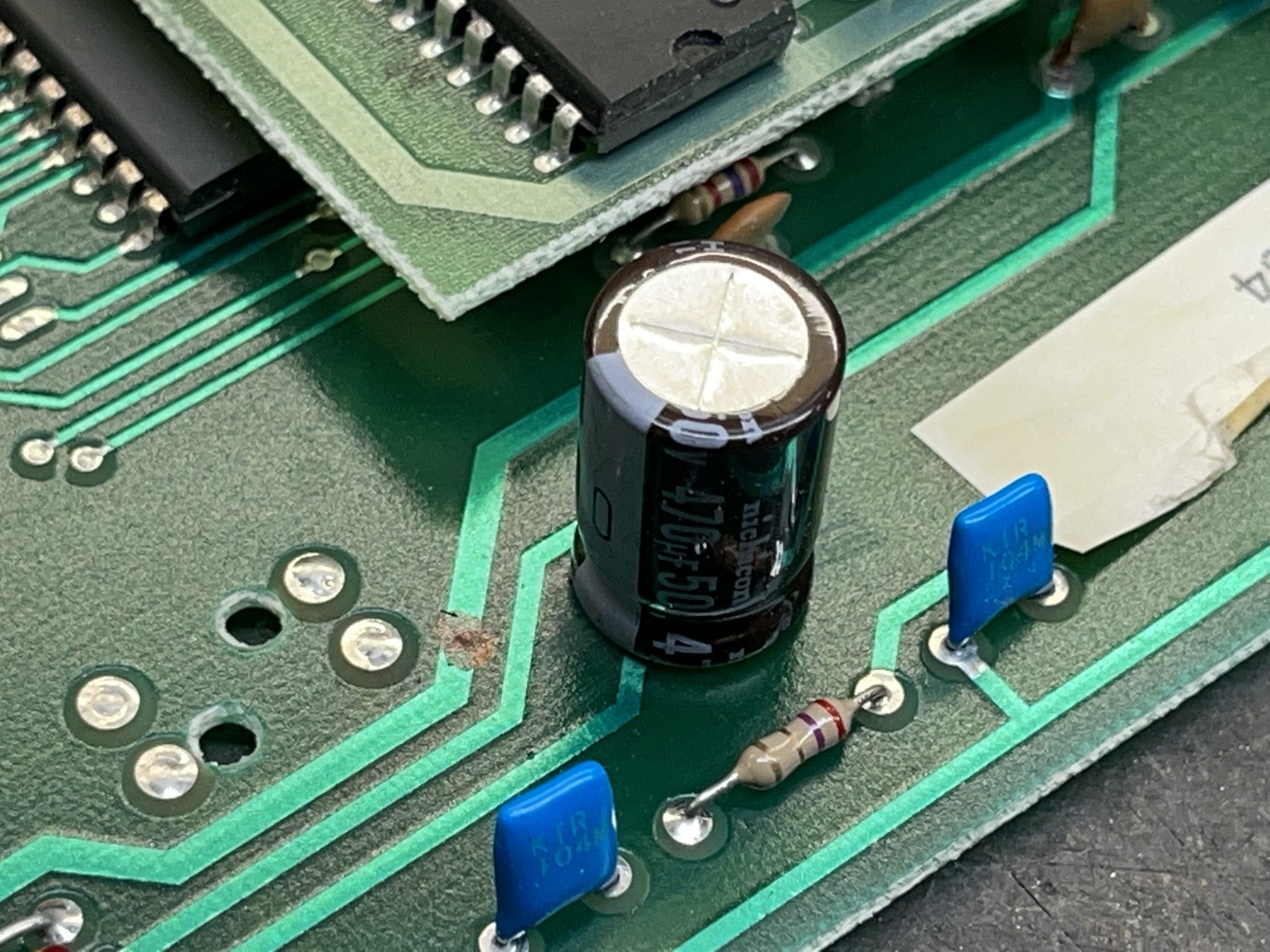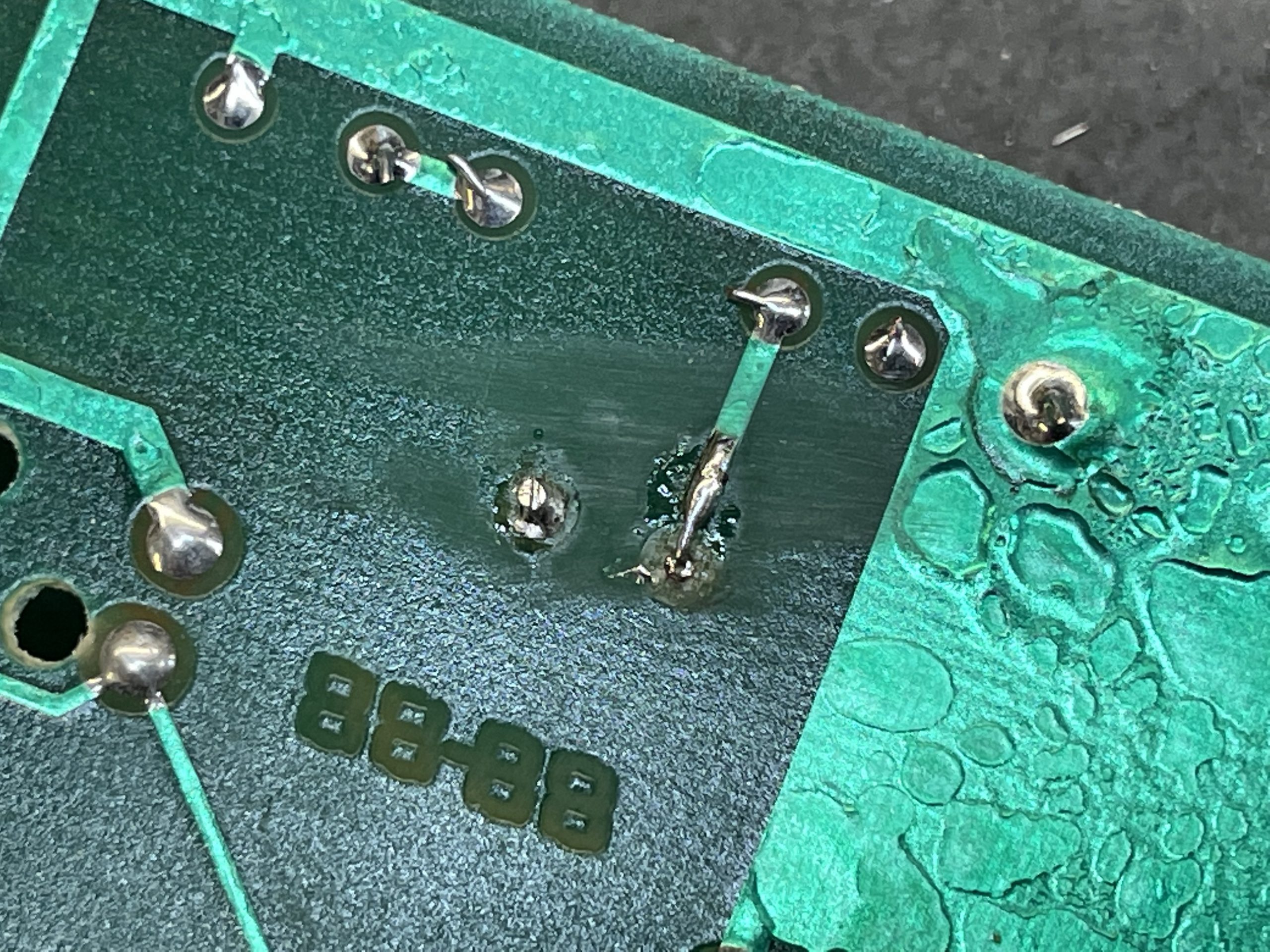Here’s another Jacks to Open Pinball repair for ya. This time the sound board was jerking me around. It really blows when you take a working board out to service it only to find out it doesn’t work when you’re done.
On this particular sound board with the satellite board, you need to remove the satellite board from the main board and reheat the pins underneath. The solder joints get cold over time and cause erratic operation or can cause the board to fail altogether.
Taking it apart is very tedious and it’s real easy to f*ck the traces up. You definitely need a lot of patience and you have to take your time. Once it’s apart it’s just a matter of reheating the pins on the satellite board. Make sure you have good clean solder points and you didn’t accidentally bridge two pins together. After you double check your work you can reattach the satellite board to the main board.
It’s also a good idea to replace the capacitors since they are starting to leak. The polarity isn’t marked on the board so I take a sharpie and put a dot next to each cap on the negative side.
So I get the board done, put it in the game and……. nothing. Not a sound, beep or a hum. It’s stone dead. I tried wiggling the satellite board to see if maybe I missed a solder connection. Still nothing. So after thinking WTF, I pull the board back out and triple check my work. Everything looks good.
The problem could be in two main places, a logic problem or an amplifier problem. A quick and easy way to see if the amplifier is the problem is to moisten the tip of your finger and touch the pins of the amp on the back of the board. If it’s ok, you’ll get a little hum or you may hear the speaker pop.
At the minimum this will tell you that the amp is getting power, functioning and the wiring to the speaker is good. In this case I had no hum.
I tried another sound board just to be sure. I was able to verify the ROM was good, I also got a hum out of the speaker when touching the amp pins. It’s odd that the amp would fail while servicing the board, but I didn’t think that was it.

For some reason, I’m thinking of the cap in the pic above. I don’t know why, but something is telling me this cap is the issue. It’s in the power line for the amp. Could a new cap be bad? While it’s rare, yes, it wasn’t the problem.
I took the board back to the bench to pull the cap to test it. Electrolytic capacitors can be tested with an ESR meter, if you have one. If not, you can get a cheapie one that will be adequate until you decide to invest in a better one down the road.
I didn’t even have to test the cap and I immediately saw the problem. The trace broke when I replaced the cap, but didn’t see it. When I removed the replacement cap a small piece of the trace lifted off. You can see the repair in the pic below.

I still had to put a new cap in since there wasn’t enough wire lead to repair the broken connection. Sometimes I’ll use copper foil tape to repair traces but this was such a small space that it would have been more of a pain in the ass than it’s worth.
Small gaps like this can be repaired by leaving a little extra lead length on the replacement cap and just bending it over. Make sure to clean enough solder mask off so you can make a clean solder joint. If the trace on the top side of the board is broken or the eyelet is damaged then you may have to get creative in how you repair the connection.
This was a simple thing to fix, but it’s also why I’ll suggest doing one thing at a time then retesting your work before moving on to the next thing, such as replacing a bunch of IC sockets.
If you replace one thing at a time then suddenly the board stops working it will make trouble shooting much faster and easier.
I replaced a bunch of IC sockets on a working Ms Pacman board only to find it didn’t work when I retested it. Man that sucked, I spent at least an hour going over everything with a fine tooth comb until I found one socket with a tiny hairline break in it.
Some boards are more forgiving than others. Early Bally boards are ones that can be very touchy. Early William’s pinball systems 3-7 are relatively tough and I’ve replaced all IC sockets at once and never had a problem.
Practice and experience will tell you what you need to be careful with.
‘Till next time, Frank.

Be the first to comment